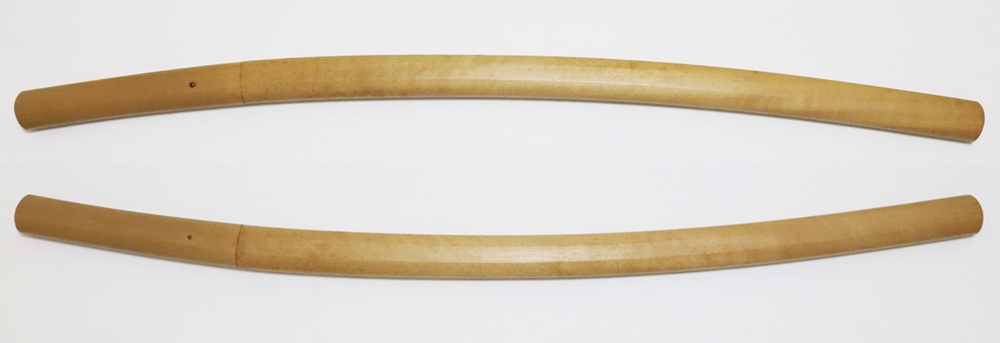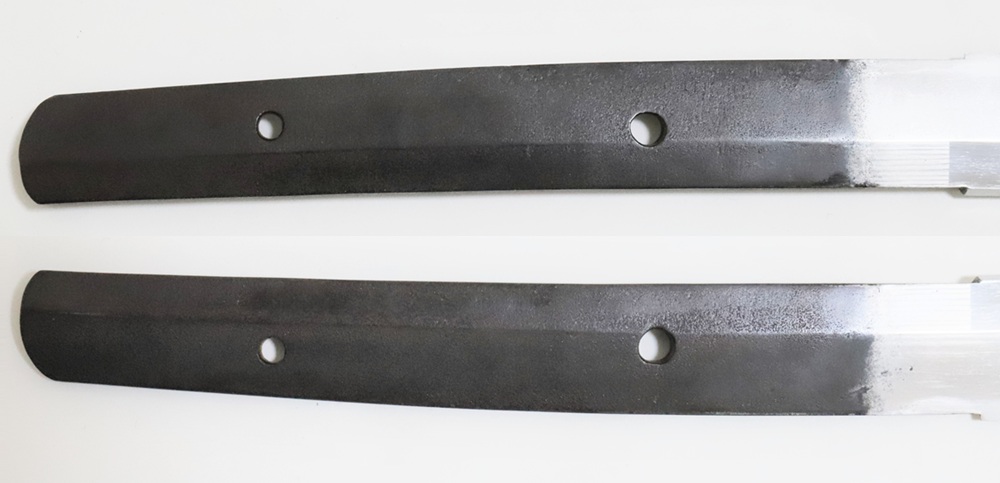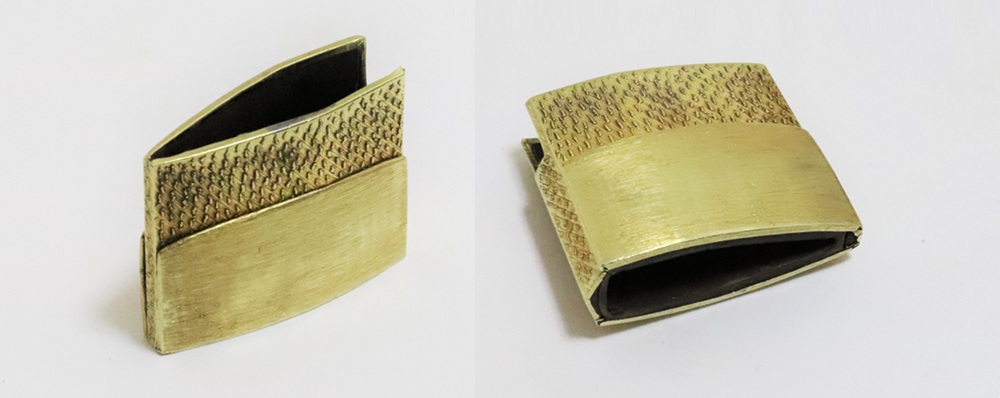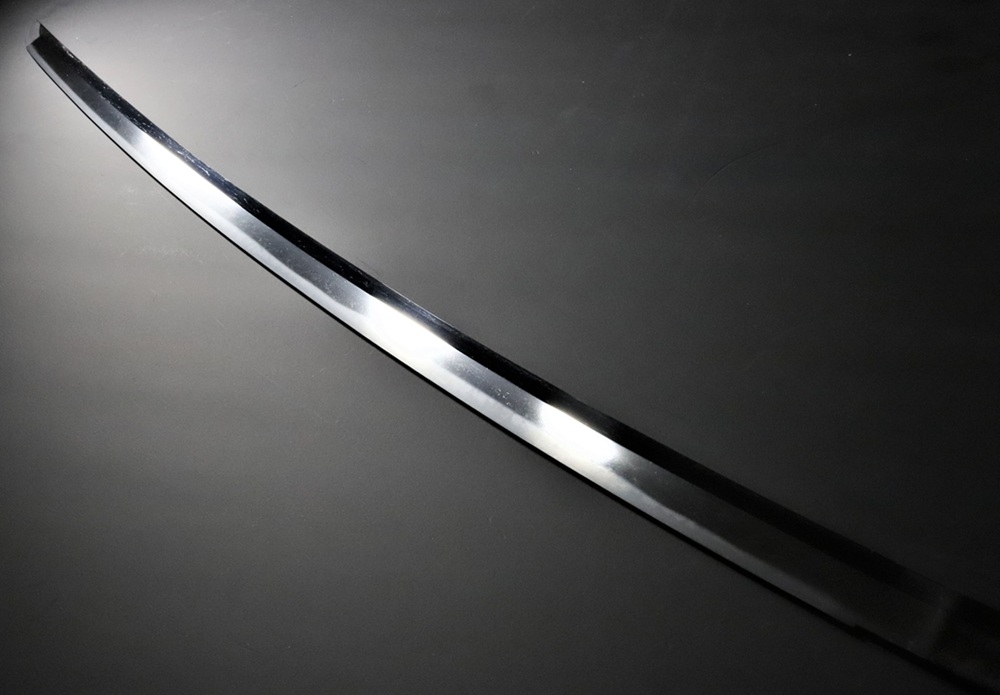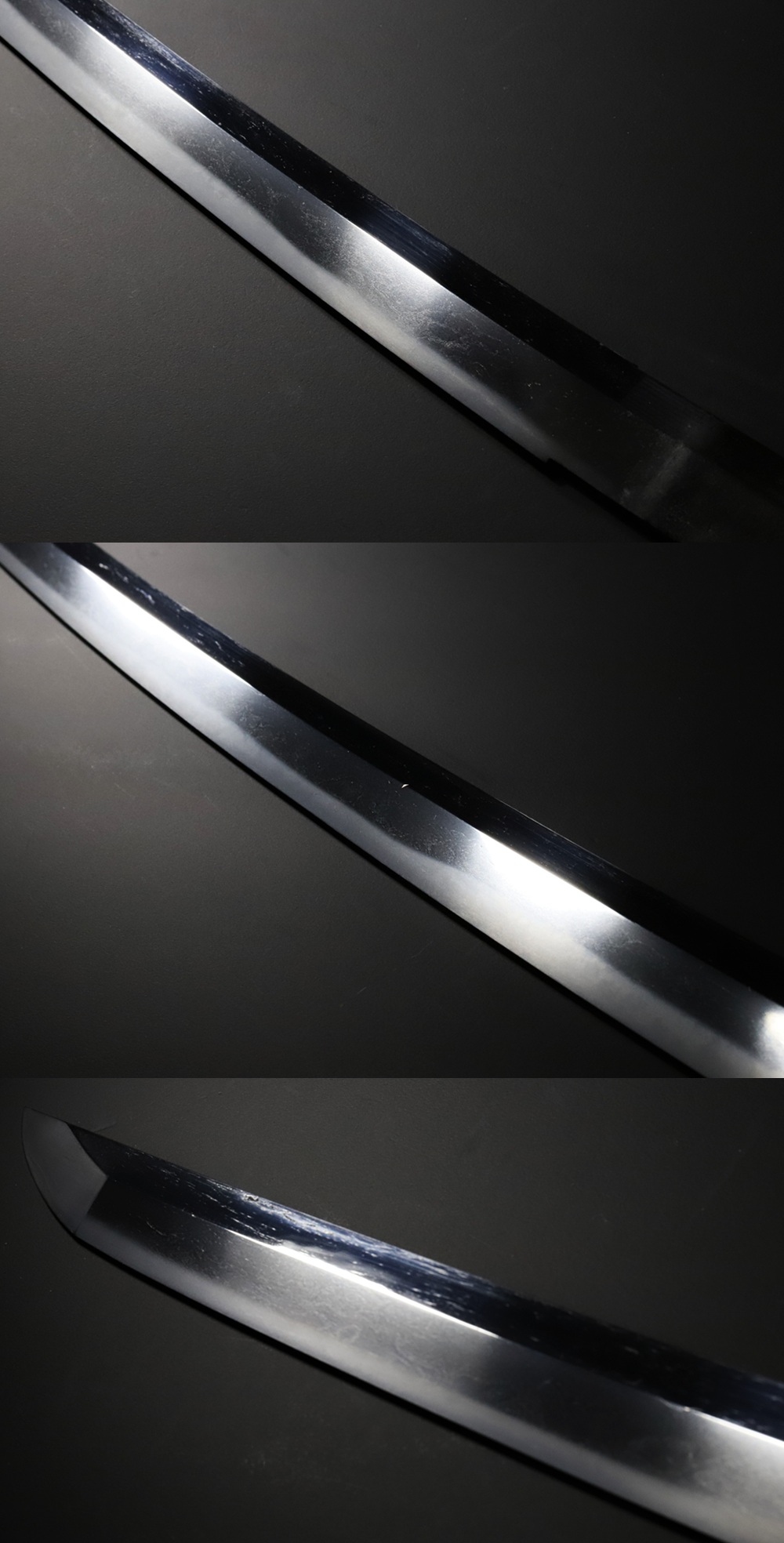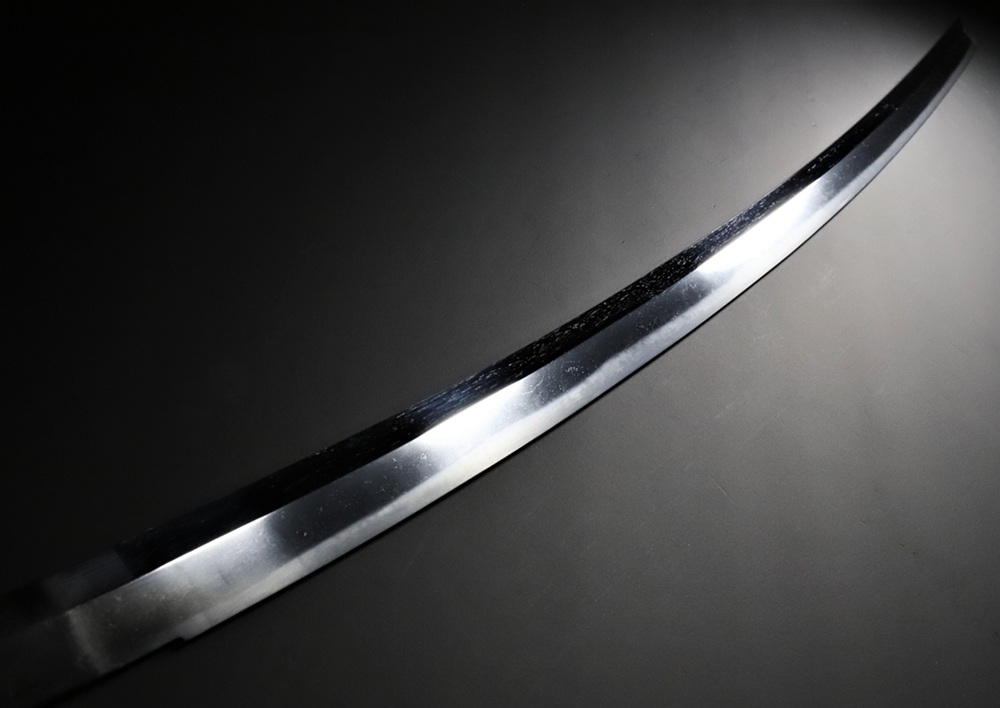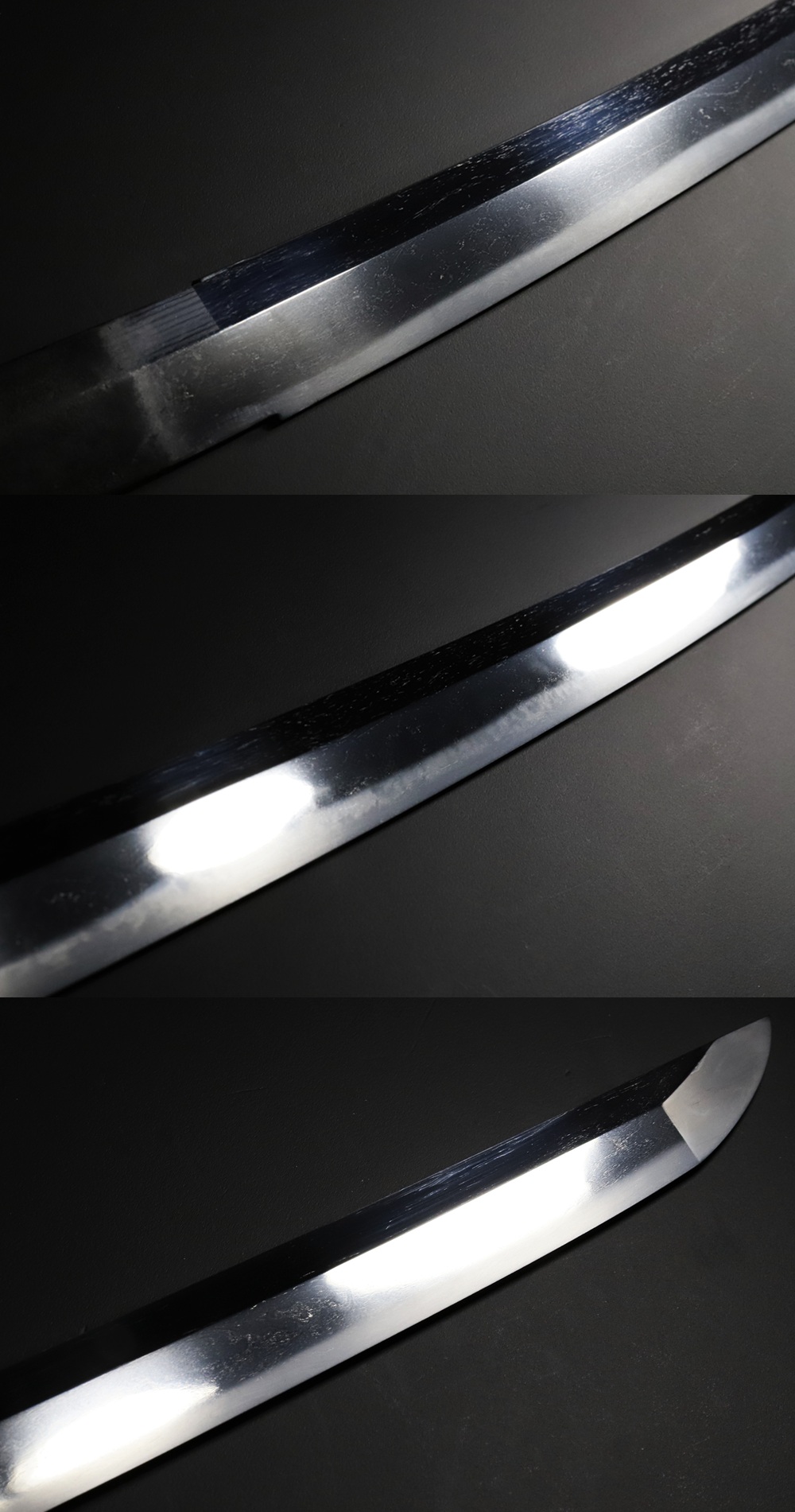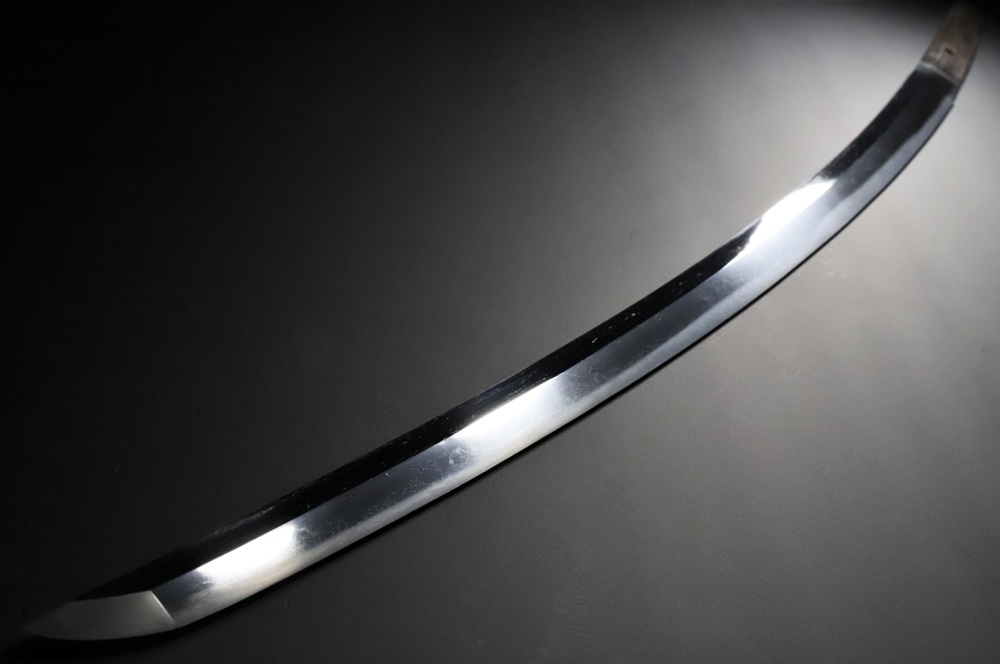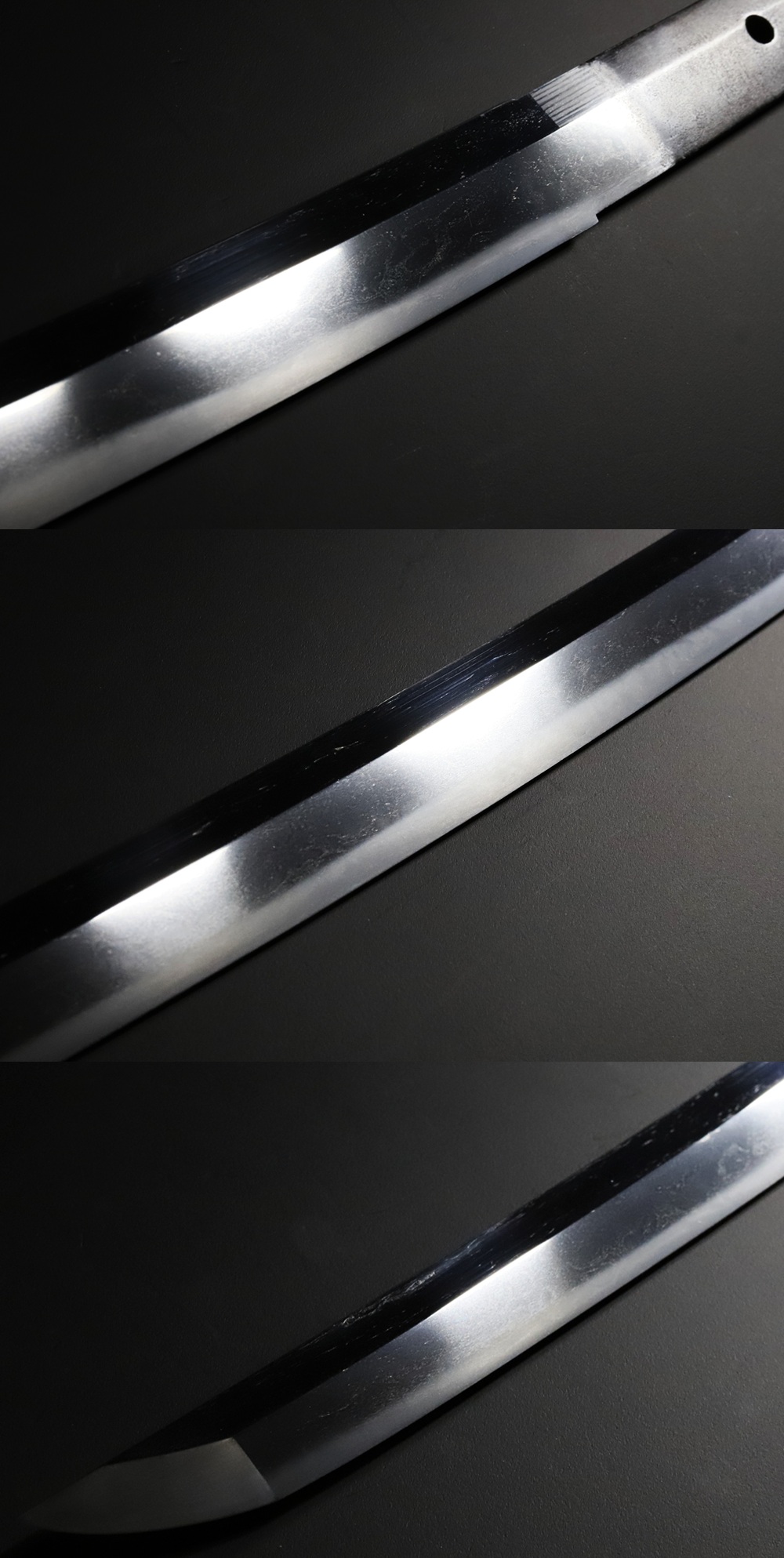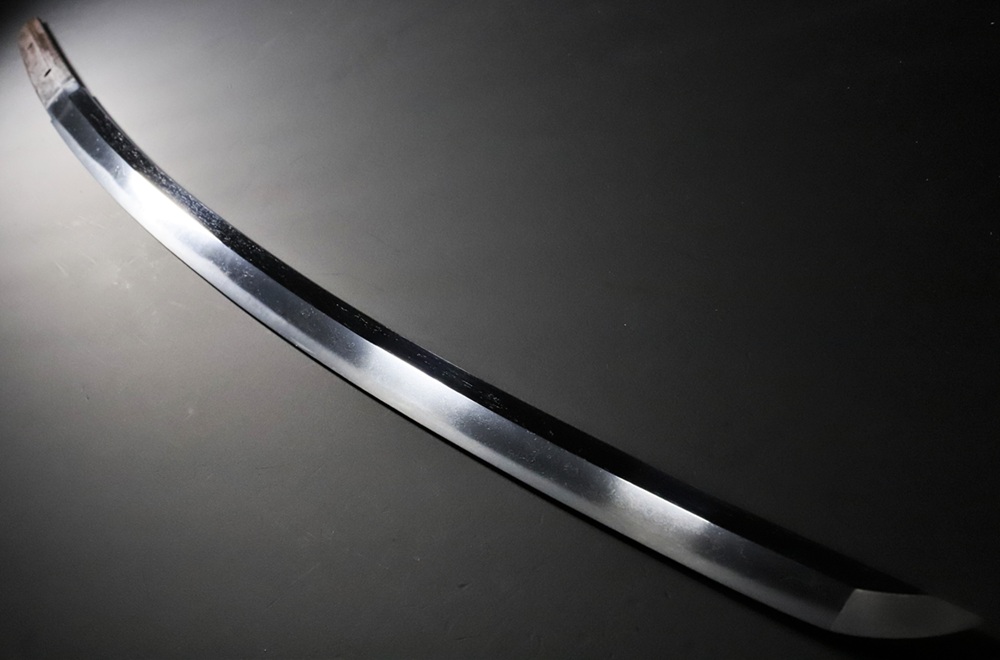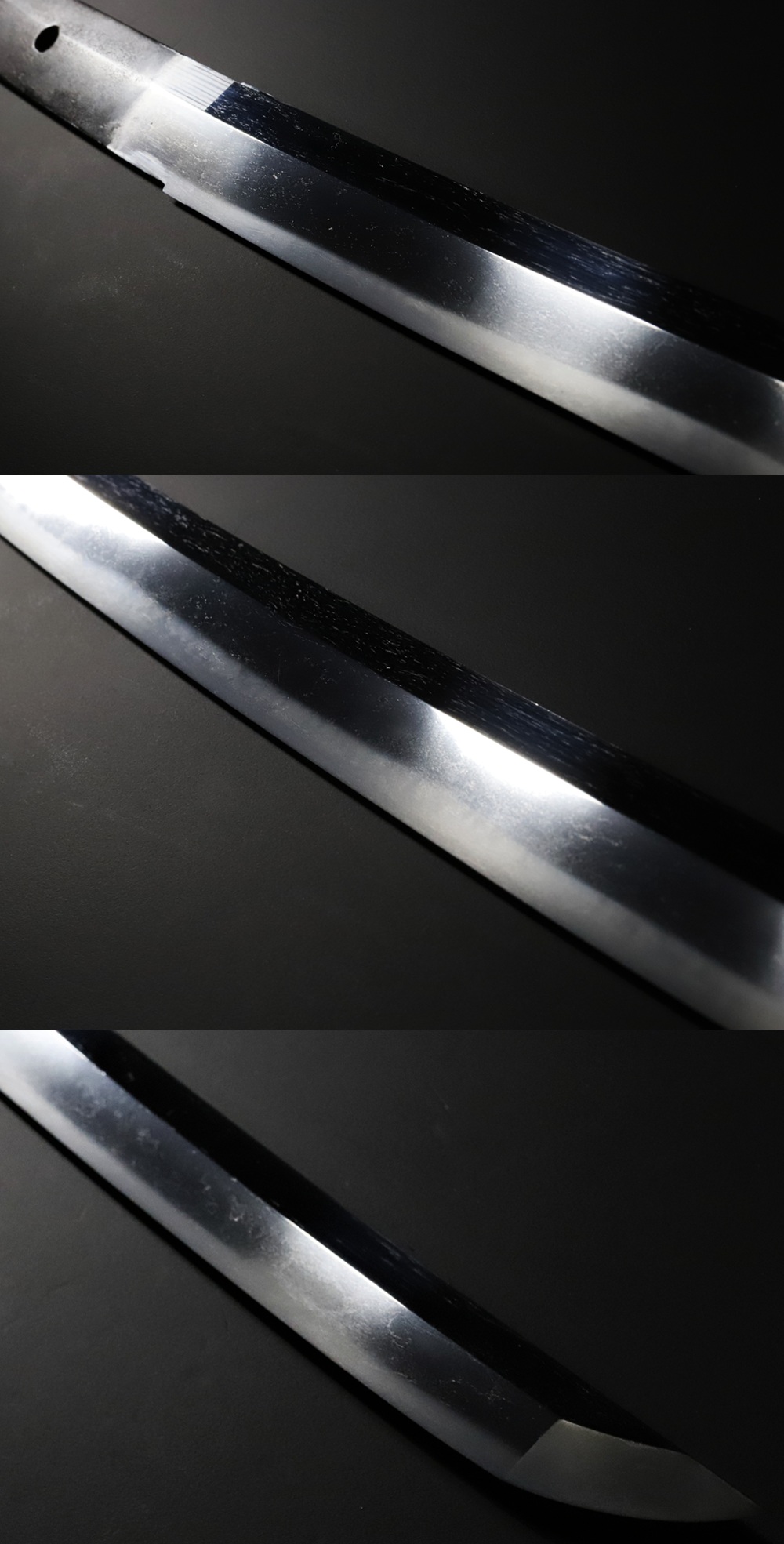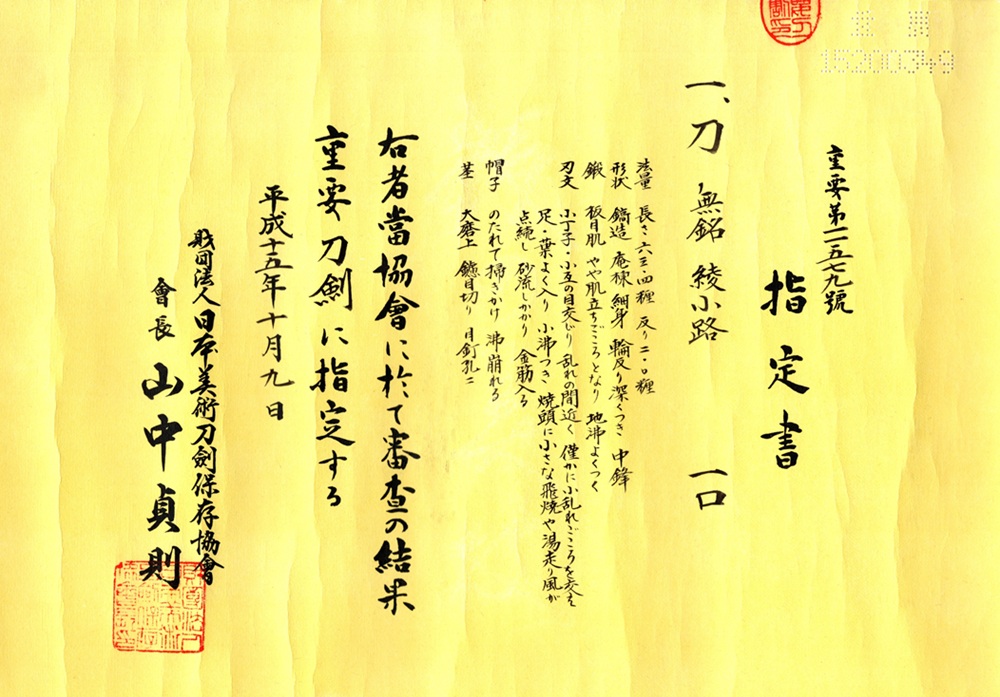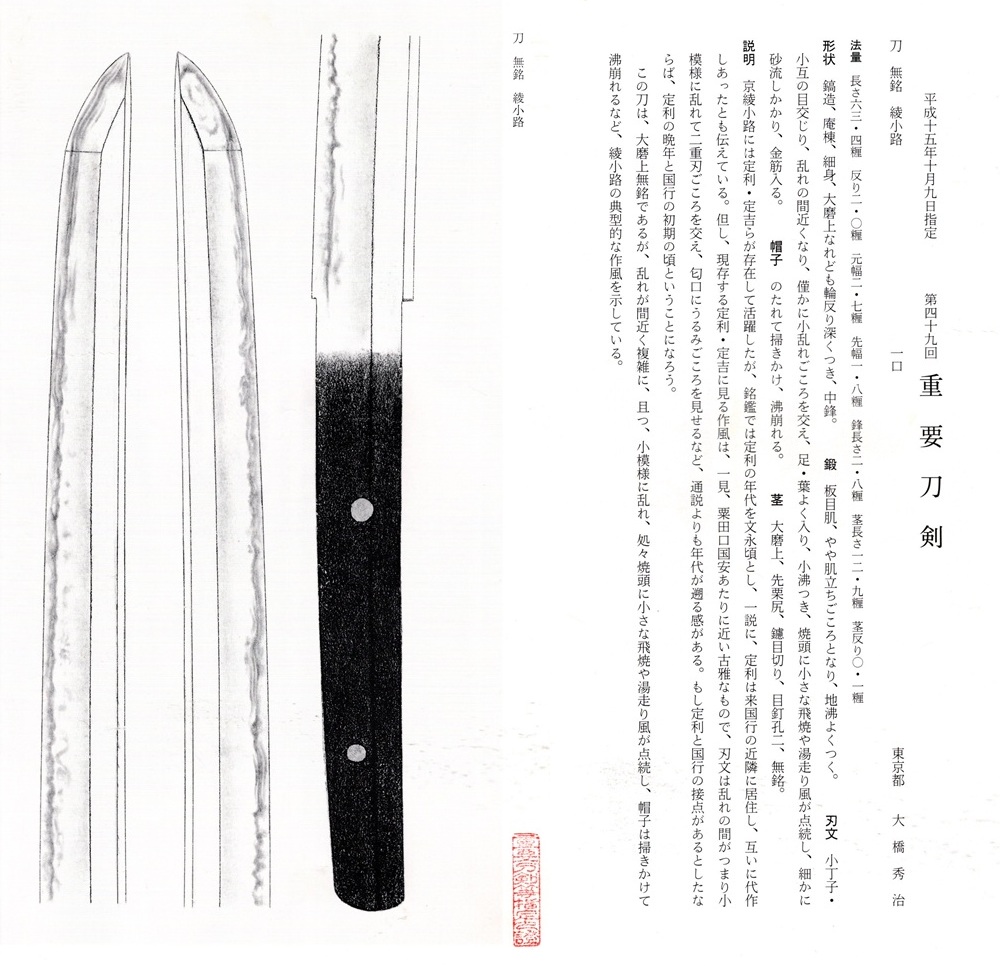
| Product No. KA-0731 無銘(綾小路) | |
|---|---|
| Mei |
Mumei, but has been attributed to the Ayanokoji school Back: -- |
| Shape | Shinogizukuri Iorimune |
| Region | Yamashiro Province |
| Era | Mid Kamakura Period |
| Length |
63.4 cm 25.0 in |
| Sori (curvature) |
2 cm 0.8 in |
| Motohaba |
2.8 cm 1.1 in |
| Sakihaba |
1.9 cm 0.7 in |
| Munekasane |
0.6 cm 0.2 in |
| Status | Juyo Token |
| Certification Date | October 09, 2003 |
| Registration Authority | Aichi Prefecture |
| Registration Date | March 22, 1951 |
| Jihada (Metal pattern) | Itame with Jinie |
| Hamon (Temper line) | Ko-choji, Ko-gunome, Ko-midare, Ashi, Yo, Ko-nie, Tobi-yaki, Yubashiri, Sunagashi and Kinsuji |
| Bōshi (Point / Tip) | Notare Hakikake Niekuzure |
| Nakago (Tang) | Osuriage, Kiri file and a Kurijiri end |
| Mekugiana (Rivet holes) | 2 |
| Habaki | Two part, copper base gold foil with file habaki |
Price |
4,000,000 JPY |
| This sword was designated an Juyo Token in 2003 (49th). It is an Osuriage/shortened, mumei/unsigned sword, but has been attributed to the Ayanokoji [綾小路]. Ayanokoji was a group of swordsmiths whose founder was Sadatoshi [定利], who lived in Ayanokoji, Kyoto around Bunei Era (1264). The only swords that remain with Mei/signatures are those of Sadatoshi and Sadayoshi [定吉]. The features of the Ayanokoji are the style is classic, narrow, and elegantly curved. This sword shows the typical style of Ayanokoji, with the irregular hamon close together and in ko-midare, small tobiyaki and yuhashiri scattered here and there on the yaki-gashira, and the boshi is hakikake and niekuzure. |


